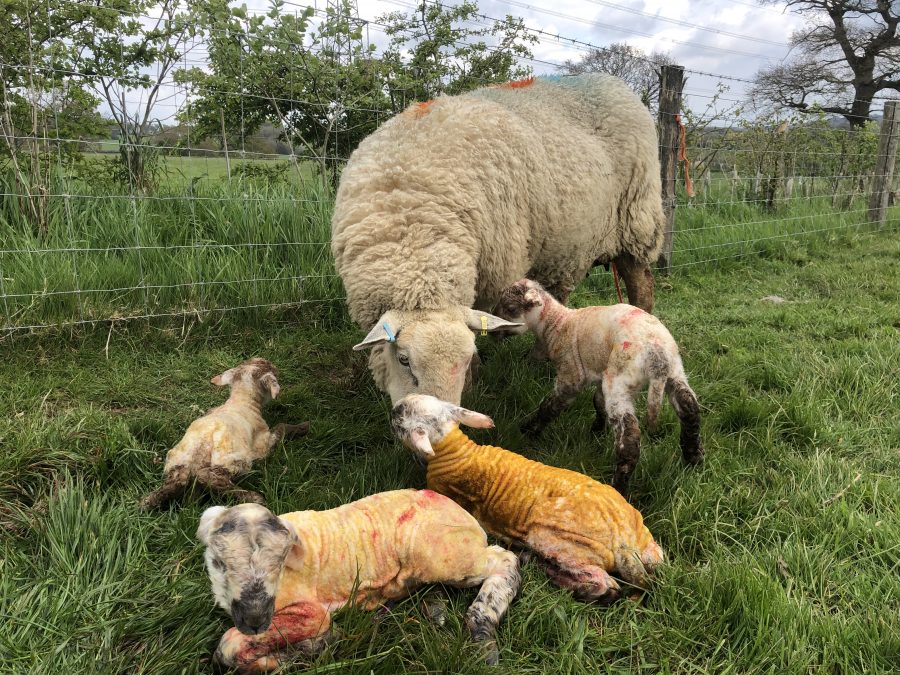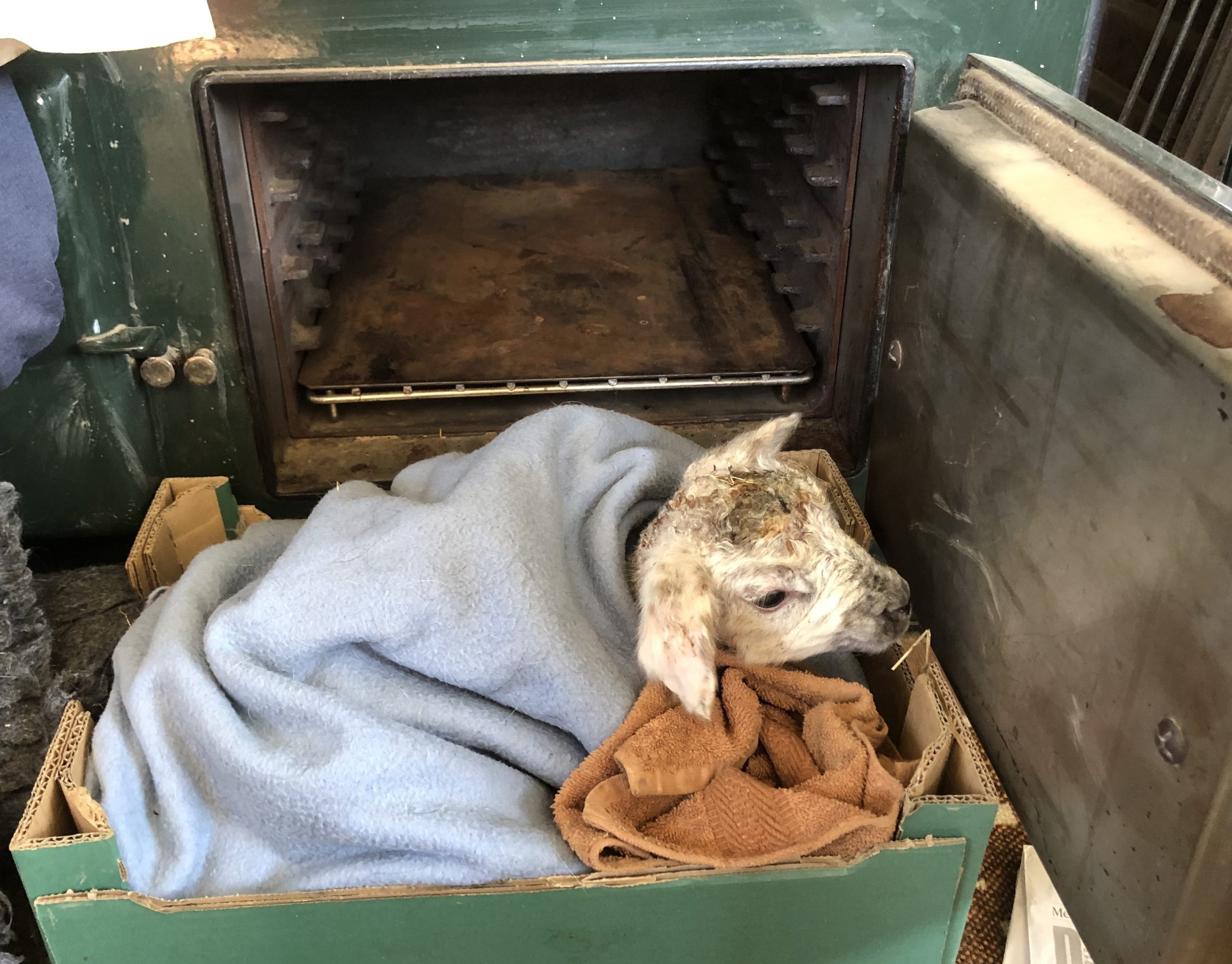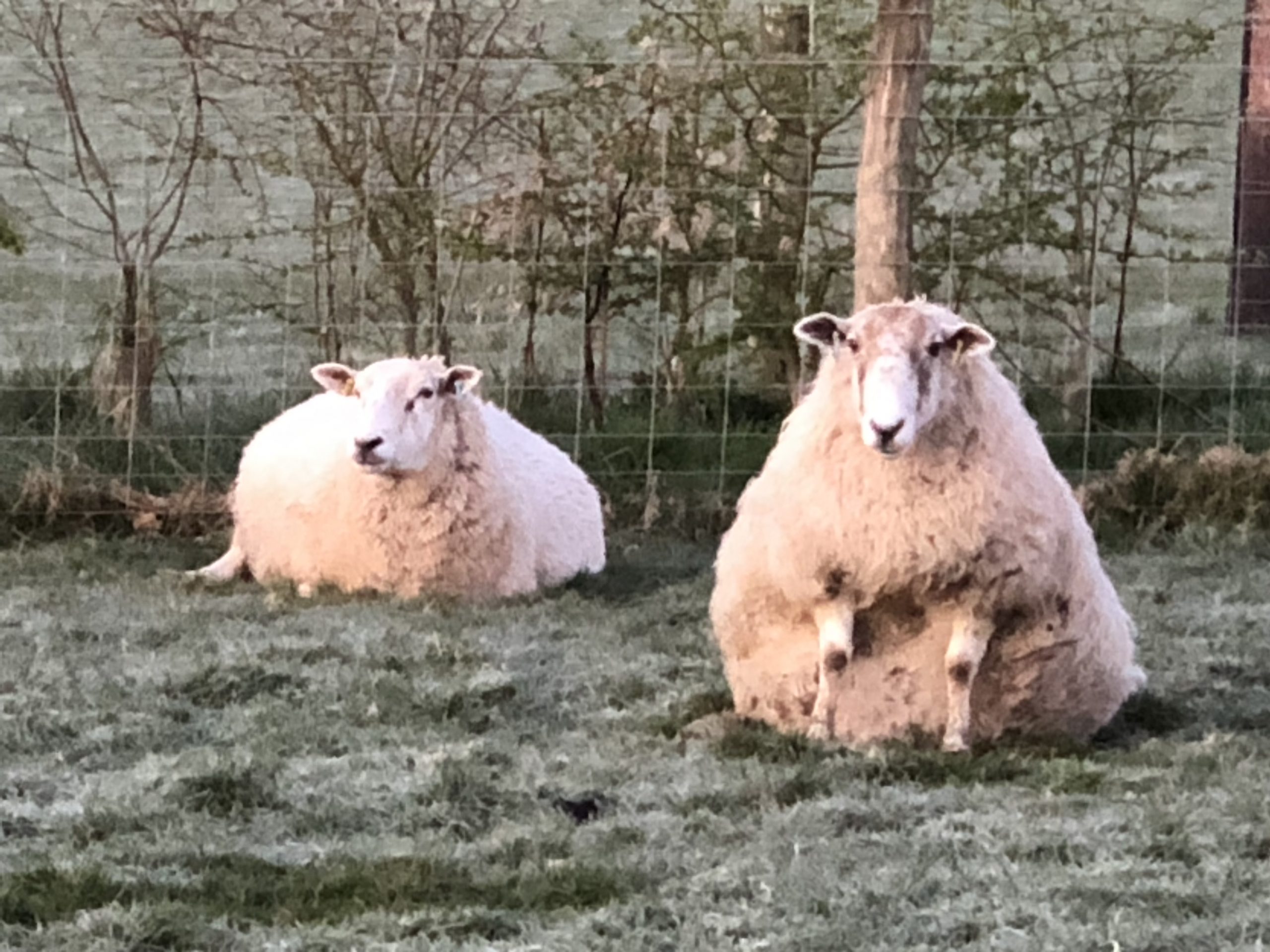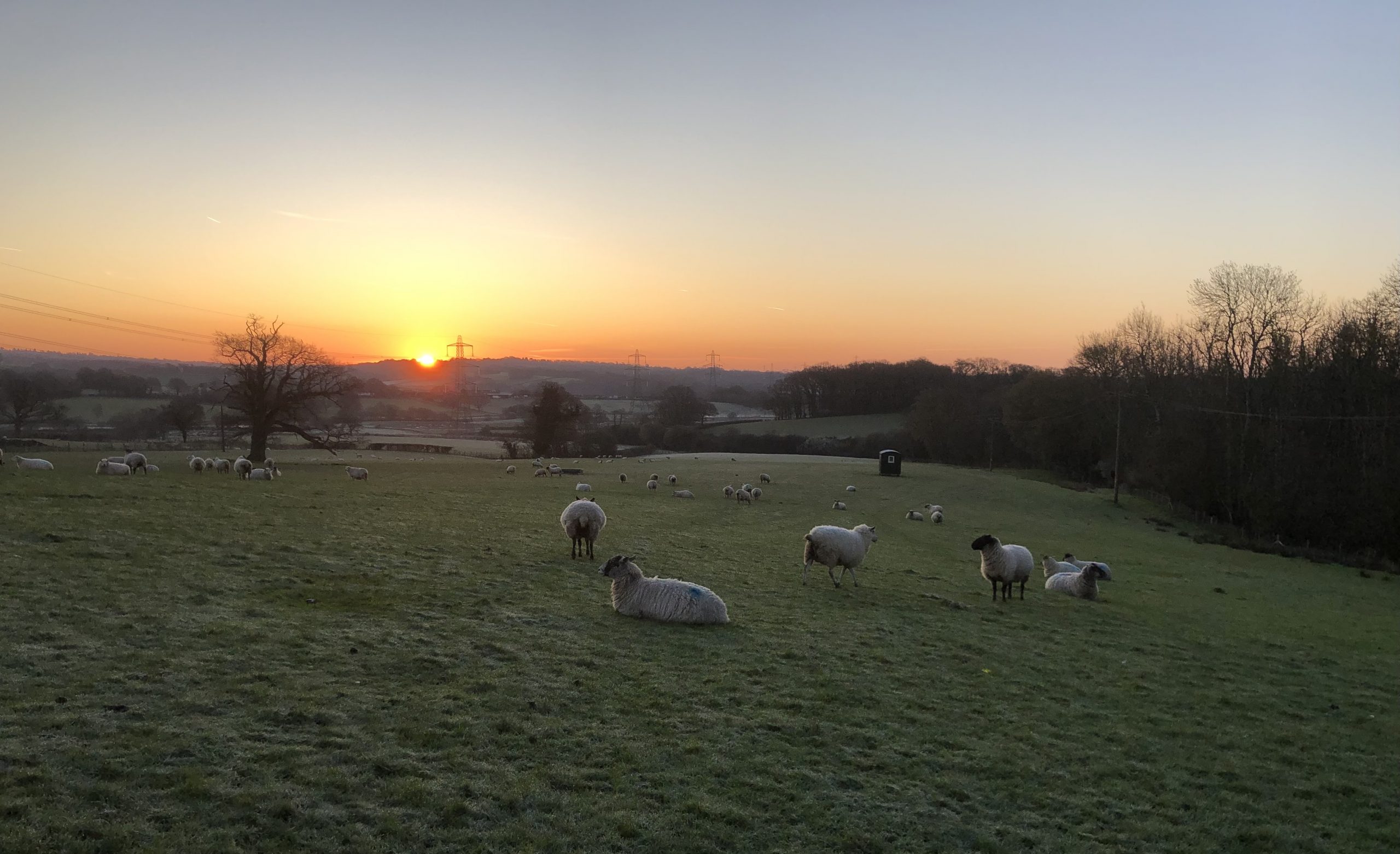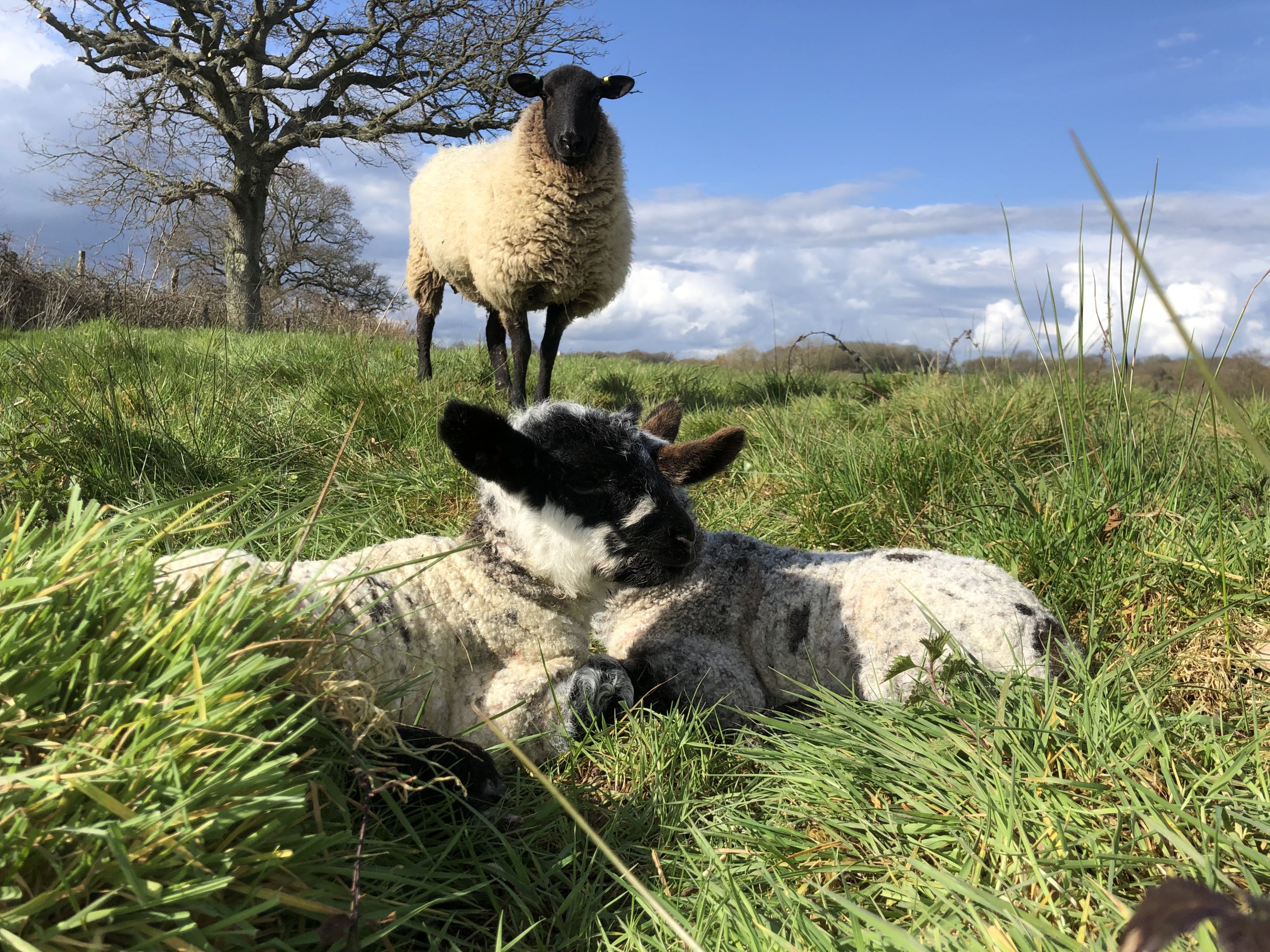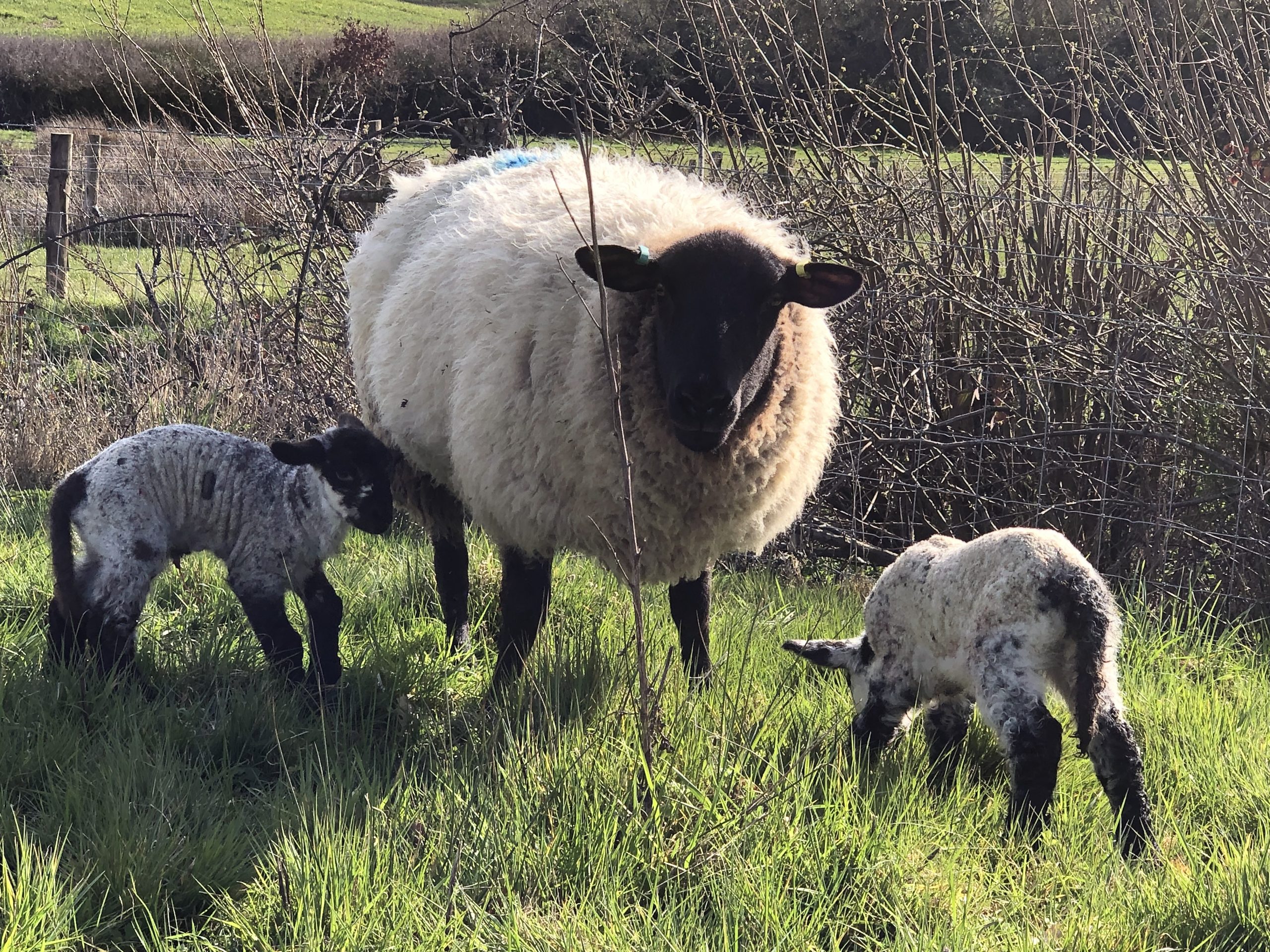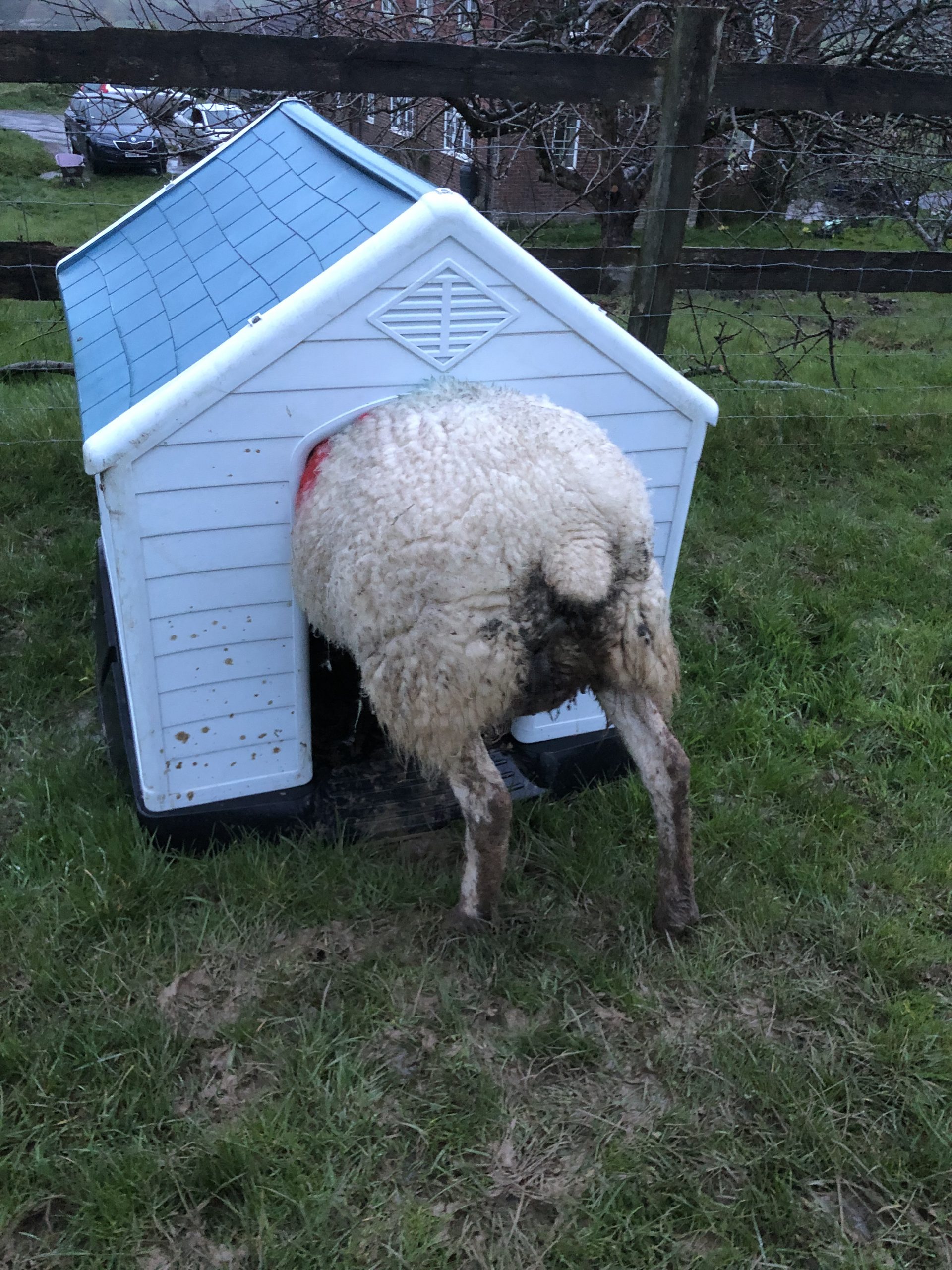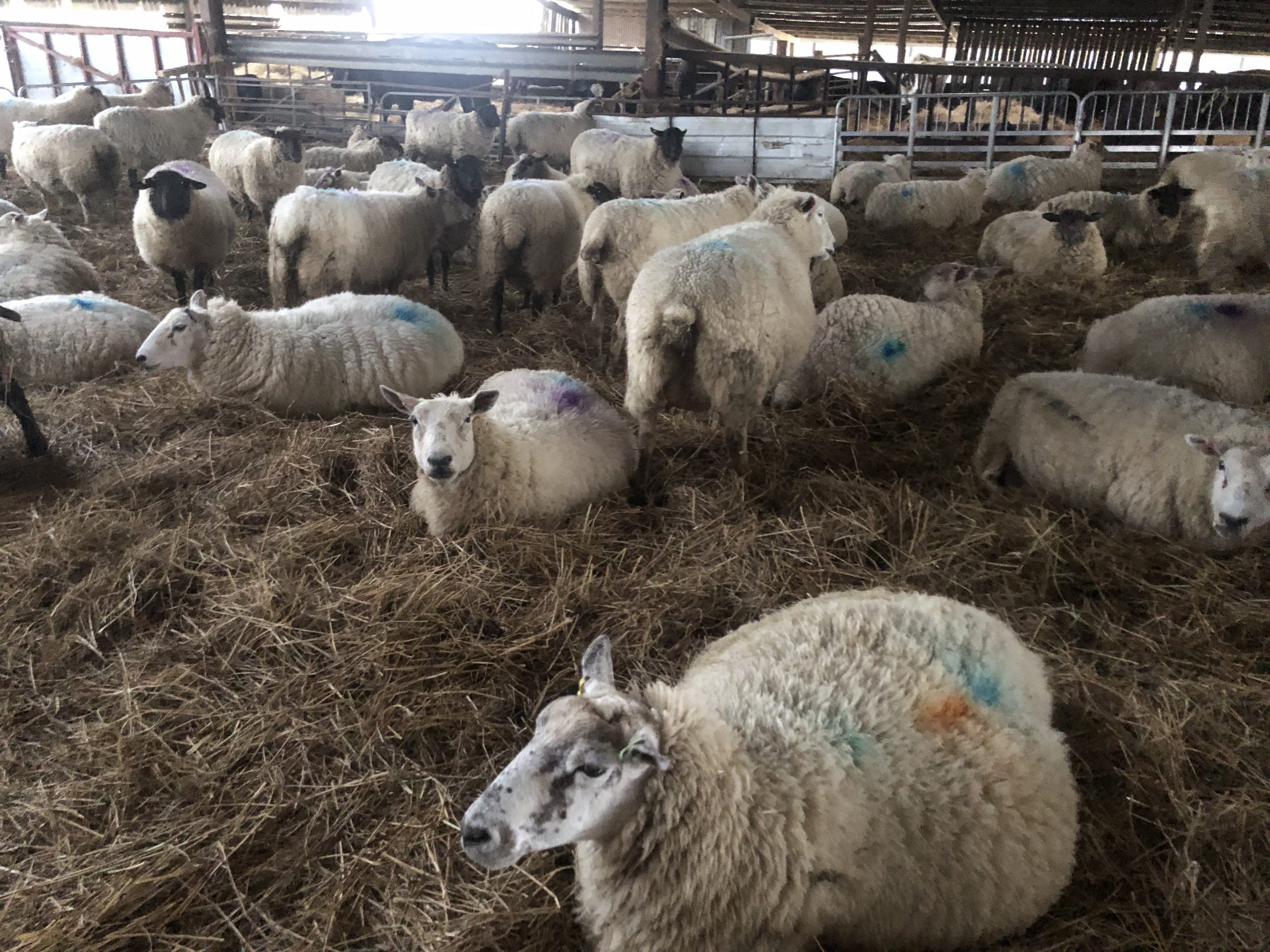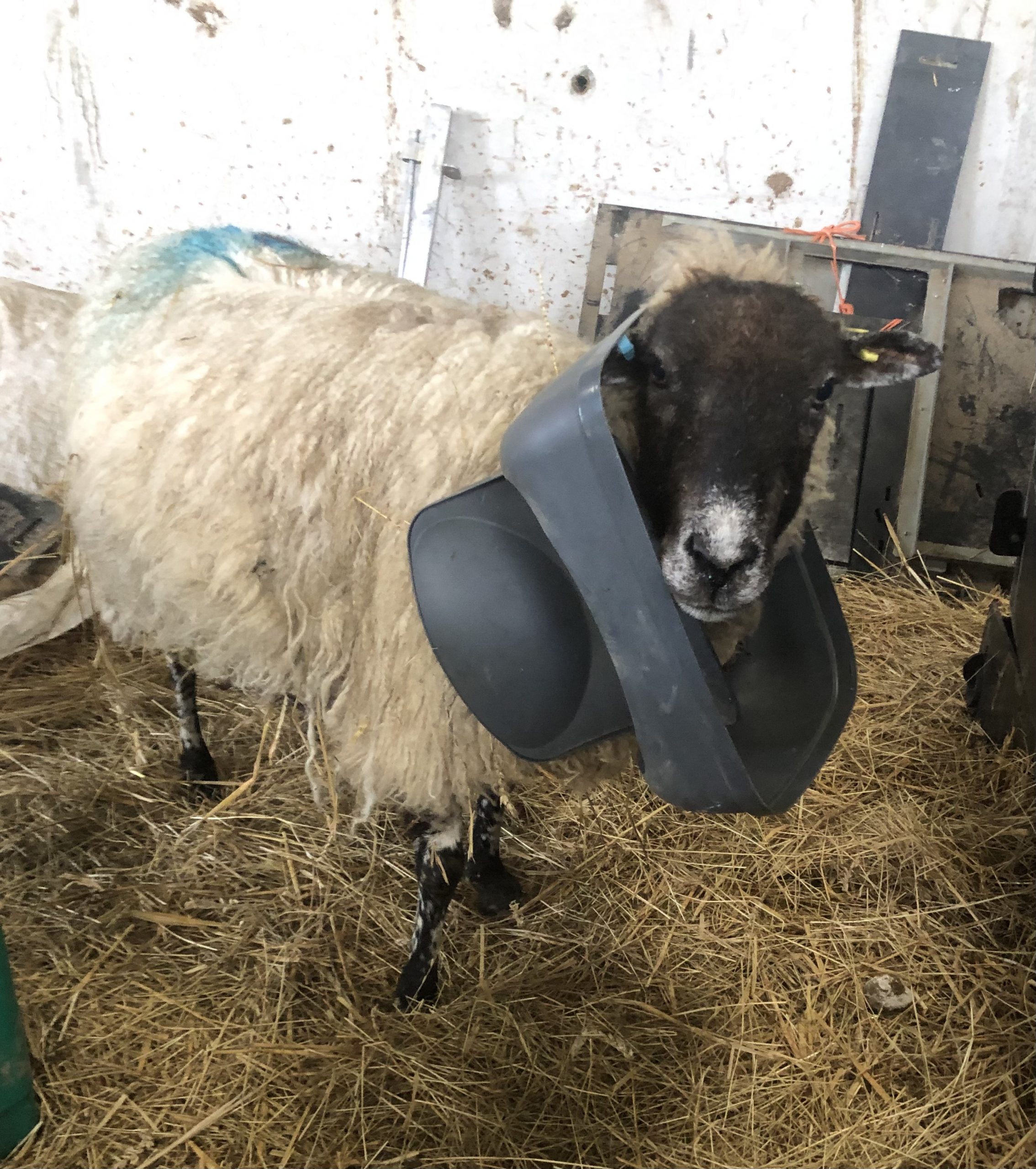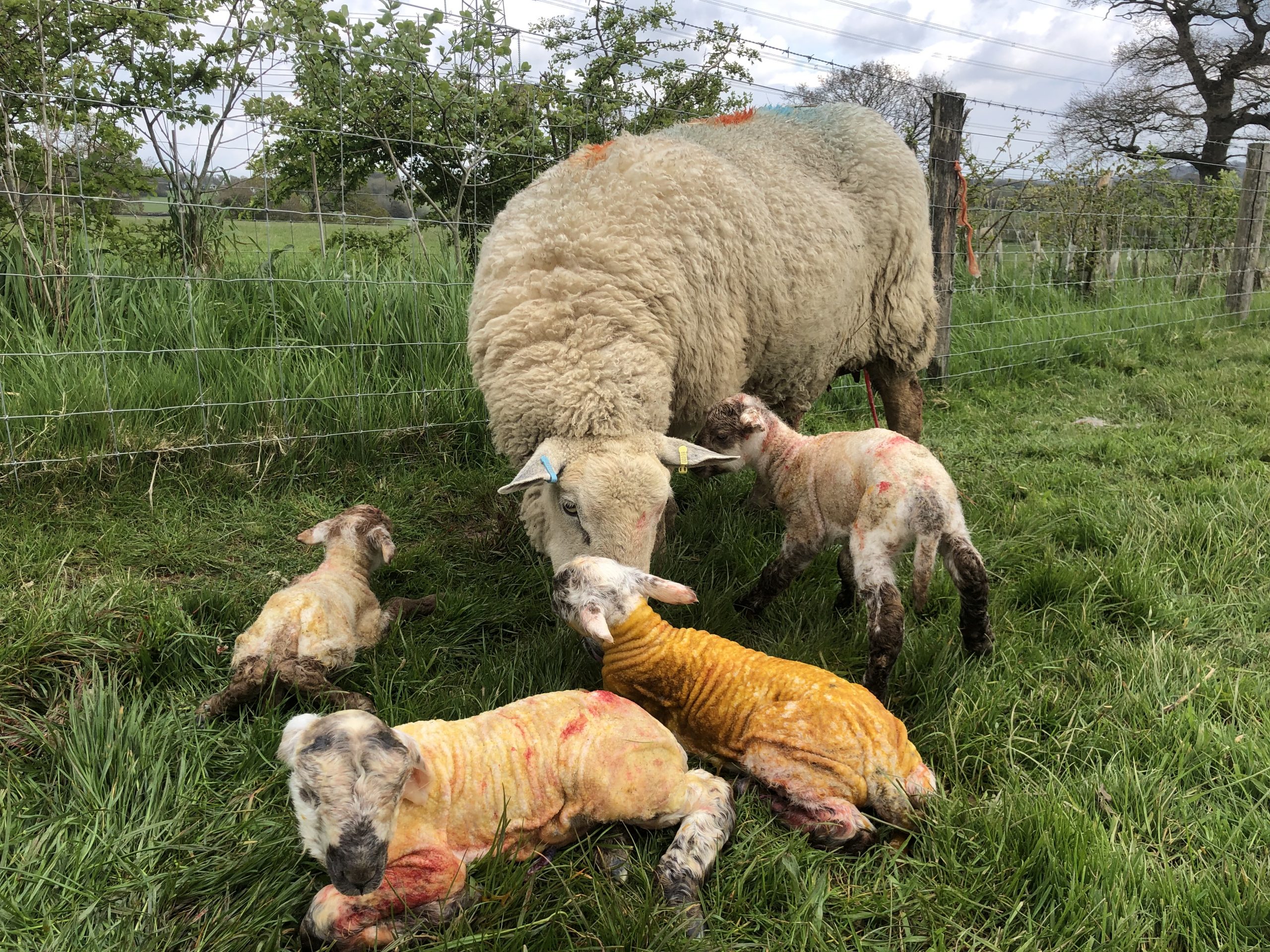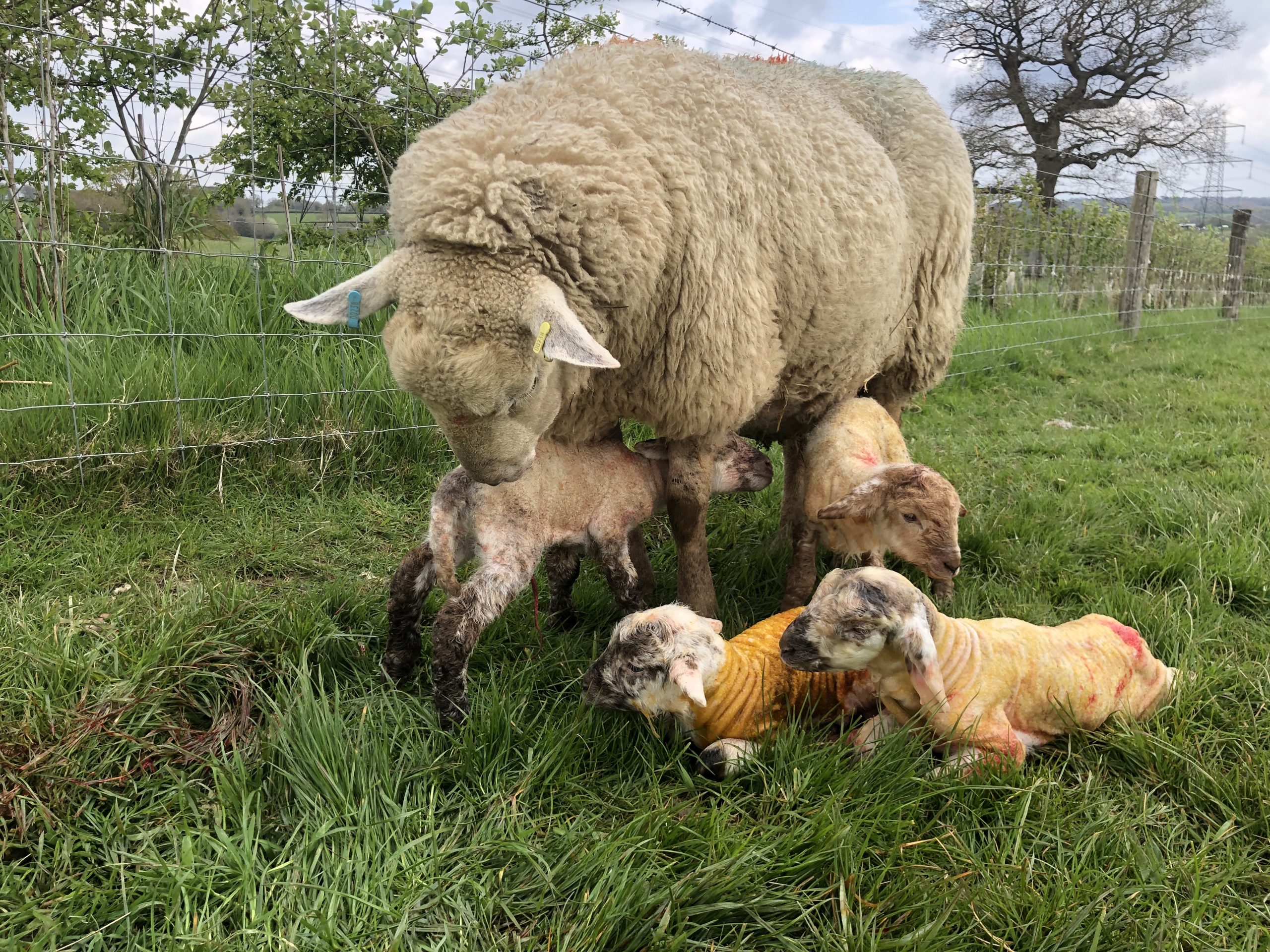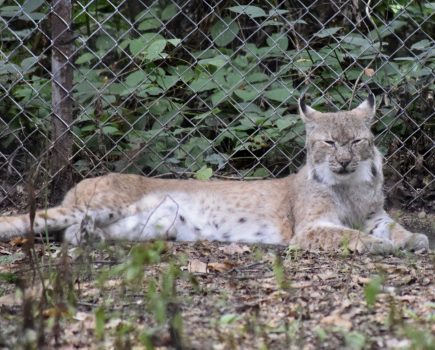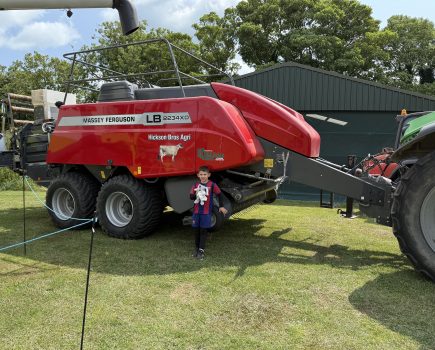Lambing in April doesn’t necessarily guarantee good weather. This year, February lambers probably had the better deal, with a combination of persistent rain and cold winds making later lambing tougher than usual.
The newborn lambs landing on waterlogged ground soon need to get going and fill their bellies with colostrum; otherwise they’re in trouble. The fallen stock collectors have been busy and predators are looking very content. We somehow started lambing before we got the ewes crutched out, a big mistake as we’re now doing it as they lamb. The crows appear to be delighted and have been swooping down and flying off with the daggings, presumably to use in their nests.
I’m sure there are easier ways of making a living than shepherding. When I’m tired, wet, cold, hungry, covered in paint spray and iodine and wearing waterproofs that are liberally plastered in meconium, cleansings etc, I do slightly question my sanity.
Lambing time is enjoyable, right? Luckily my assistant Brie the sheepdog shares my enthusiasm. Family members have all pitched in and their help has been invaluable, although they say I fuss too much. I can’t remember them complaining about that when they were younger. Everyone has enjoyed scoffing the box of broken biscuits and beer to boost flagging energy levels.
Eight years ago we switched to all outdoor lambing, which is more natural and works well when all goes to plan and fine weather predominates. However, having endured one week of dismal weather conditions and with Shrek (our Kawasaki mule) currently lacking the vital four-wheel drive facility for getting around in mud, I felt a change was needed.
As the person who does early and late checks, I threatened strike action, demanding better working conditions for myself and flock. Consequently, we reshuffled the cattle accommodation and created a space to get the expectant flock in overnight. Out days on grass, in at nights with access to hay and hi-energy blocks gives you the best of both systems. It makes it a lot easier sorting out any lambing problems.
While outside overnight, our very first triplet ewe to lamb managed to get on her back. Instead of being out there at first light I stopped to tube two calves who needed to be rehydrated because they were scouring. This delay proved costly for my cast ewe. When I spotted her, I righted her and immediately lambed her. She had three good lambs, all dead.
The mother lasted five minutes and promptly died herself. All my lambing equipment, treatments etc, were on Shrek, which I hadn’t used in order to avoid muddying up the pasture. I was distraught; sometimes you just can’t win. The calves made a good recovery, but they could have waited.
Our second triplet ewe produced three fine lambs herself; I was delighted. I left her out as it was a rare moment when the sun was shining, until I was alerted by the hungry bleating of her offspring. On investigation the mother turned out to only have milk in one side.
It’s not all problematic, and on the whole we’ve had a lot of good strong lambs that haven’t needed any input from us other than iodine on navels, marking up, recording and ringing. They are the ones that are on the keepers list. The cull list is quite long, consisting of any who give me grief, as I’m aiming for carefree future lambings.
As usual, I’ve fostered spare lambs whenever possible, wet fostering and skinned lamb coats being the most successful method. Ewes in the headstock system has not worked so well. One single-bearing ewe with a good milk supply who was mothering up fine was not at all impressed when we tried to use her as a foster mum. When she was released from the headstocks she rejected both lambs. We removed the foster but then she refused her own lamb. It’s been a battle of wills; 14 days later, hoorah… she has finally come around to my way of thinking and agreed to care for her own lamb again.
Youngest daughter retrieved a poorly seven-day old lamb from the field. It looked very tucked up, its mouth was cold and it was flailing around, which didn’t bode well.
Its rescuer announced that she didn’t know why she had carried it in because it looked like a ‘no hoper’. I told her to “have faith” while eldest daughter helped me administer its revival therapy. We gave it a warm 10% glucose injection into the peritoneal cavity, tucked it up in a bed of straw and put some lamb boost on its tongue.
I gave it some Metacam pain relief and antibiotic cover for infection, left it for an hour and then tubed some warm milk. I actually then forgot about it until I went to the shed to do a check before bed and met a lamb tottering around. He might be one of the ugliest lambs around, but he sure is a character with a strong survival instinct. He’s called Dobby.
This year I’m trying a different tactic with any problem cases and triplets. They’re all going in a field together; I’m trough feeding the ewes and providing creep feed for the lambs. All spare lambs are joining this group and being topped up with milk feed as required.
Although feed is expensive, it’s worth it because the lambs are still receiving care from ewes. A shared care system, it frees up my time and it’s better for the lambs not having to be cooped up in a shed. A footpath crosses this field and any walkers get besieged by an ever-hopeful posse of lambs looking for milk.
Our grandchildren have all spent time with us during lambing and naturally we’ve delegated a few jobs to them. It’s fun to have little helpers around. I’ve been asked to talk to George’s class (4/5 year-olds) about farming and this could be an interesting experience for us all. I feel strongly that educating children about where their food comes from is important and plays a vital role in securing the future of our industry.
- Getting warm and cosy
- It’s so difficult to find a comfortable position
- Early morning check round
- Siblings bonding with an anxious mum watching over them
- It’s wet, guess where her lambs are? Unfortunately it’s a bit of a squeeze for mum
- We found some space in the shed
- Having the bin lid around your neck is a give away that you’ve been raiding the food bin
- It’s hard to keep track of four
For more like this, sign up for the FREE South East Farmer e-newsletter here and receive all the latest farming news, reviews and insight straight to your inbox.

